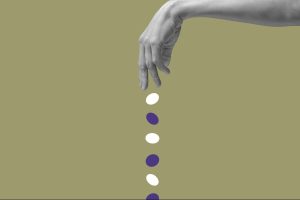One of the things that MIT researchers are taking aim at in the medical field is the ubiquity of contradictory or challenging information that can confuse even clinicians, to a point.
We know that a lot of this is present in medical literature, and that it has an effect on healthcare.
At a very basic level, that’s why a lot of doctors suggest that patients should use caution trying to self-diagnose through the Internet.
But if we look more in-depth at these kinds of challenges, we see that AI might be able to help.
An example that was given to me in a recent lecture by MIT researcher and PhD student at MIT Media Lab Abhishek Singh was the question of using vitamin E supplements and instances of cancer – certain studies showed that people were able to get apparent preventative effects from vitamin E, while other studies actually showed higher rates of cancer in taking vitamin E supplements.
Without context, that leaves the reader not knowing what to believe about vitamin E and its impact on cancer risk.
Going over this particular example and others, Singh noted that we’re really doing is, in some ways, similar to the work of early explorers who were trying to map land and sea in a previously unknown global topography.
That makes sense: think about going into uncharted waters and seeing a discrepancy between what’s on the map, and what you see with your own eyes. Who knows why that contradiction is there? Maybe the person made a mistake. Maybe they saw things differently. Or maybe something physically changed in the interim between voyages, although in most cases, that seems unlikely.
Those are just three examples. The job of the explorer, then, is to decide which to trust – the map, or their experience. Presumably, most of them would choose their own eyes over the map, and even correct maps over time, so that with a sort of crowdsourcing, you eventually come to a more accurate final result.
And I think that’s what our experts are talking about when they make that analogy – – about something like “Google Maps for healthcare,” (again, shout out to Abhishek) and how you have to look at where you are and where others are, in order to map outcomes, in the way that a crowdsourcing traffic app shows where accidents and other bottlenecks are.
Quotes from Abhishek Singh
“When it comes to Google Maps, the first thing is you track where you are. The next thing you do is, you discover where others are … and then finally, you get recommended the optimal journey to go from point A to point B.”
“This is just a glimpse of the future: we are getting towards where we will be able to track almost everything about our bodies down at a very small scale, but … also at a large scale.”
“The problem of privacy is essentially preventing us from tracking information about an individual, and being able to run all these machine learning models. So here, what we do is look at the two axes, which we care about. One is privacy, because healthcare data is sensitive. And the other is (the) novel insight we want to generate from data.”
To be sure, medical mapping is different than mapping a new world. It’s much different in terms of data sets and the challenges that exist. But if you see some of our researchers talking about using wearables for tracking, you start to get an idea of the landscape and how to get those data models, as well as how to aggregate them.
Baby talks about the principle of self-organization that can help tackle the challenge of decentralized data that’s often help in silos. You can point to privacy standards like HIPAA, but there’s also a very fragmented approach across the industry, partly because there are so many different corporate stakeholders, from the hospitals and private practices to the insurance companies, and beyond.
If I’m understanding the main premise correctly, it’s that patient can self-aggregate their data, that there’s a way to take all of the solid information and get it in one place, so that the AI can do its work.
Moving back to the vitamin E analogy, I took a look at some relevant documentation, and what you find is that the key to cancer impact may be in a person’s DNA. So that one person may have a positive effect and another may not. Now again, that goes back to the crowdsourcing approach to data and the triangulation that takes place. If you’re still looking for a binary effect on a population, you’re not going to find it. But if you start looking for a sort of Google Maps approach where you can contextualize using that supplement, you’re starting to look in the right direction, at least as far as many of our experts tell us. You see these people who are benefiting from a certain thing and how they are like yourself, and you can draw the right conclusions from the data.
I thought that was a pretty astute explanation of the impact of AI on what we’re doing in healthcare. That’s not the end of the conversation, by any means, because we have had so many good speakers telling us about exactly what’s going on in this field, so be sure to keep an eye out for more.
Read the full article here









